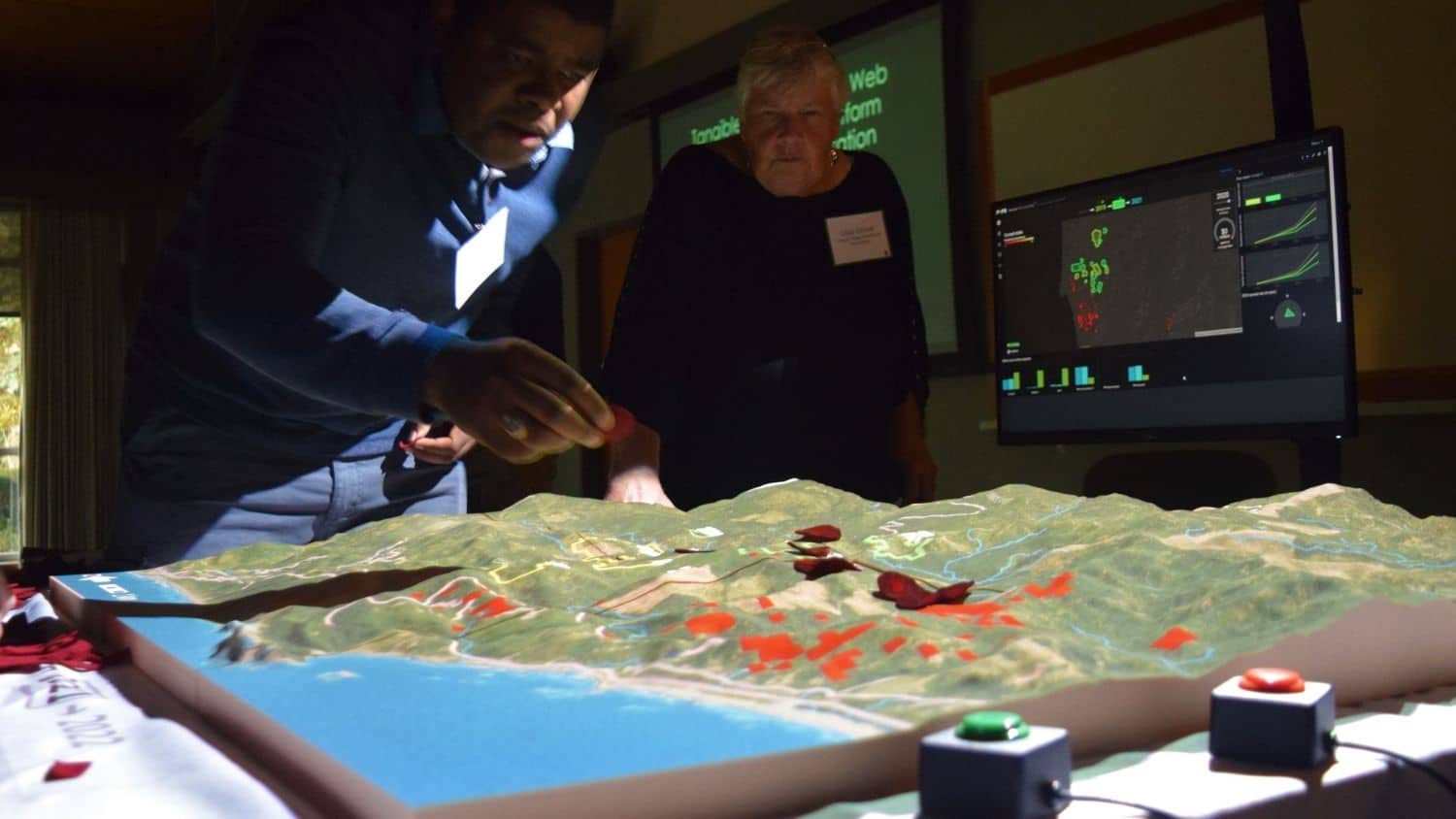Researchers Design Simulation Tool To Predict Disease, Pest Spread

For Immediate Release
North Carolina State University researchers have developed a computer simulation tool to predict when and where pests and diseases will attack crops or forests, and also test when to apply pesticides or other management strategies to contain them.
“It’s like having a bunch of different Earths to experiment on to test how something will work before spending the time, money and effort to do it,” said the study’s lead author Chris Jones, research scholar at North Carolina State University’s Center for Geospatial Analytics.
In the journal Frontiers in Ecology and the Environment, researchers reported on their efforts to develop and test the tool, which they called “PoPS,” for the Pest or Pathogen Spread Forecasting Platform. Working with the U.S. Department of Agriculture’s Animal and Plant Health Inspection Service, they created the tool to forecast any type of disease or pathogen, no matter the location.
Their computer modeling system works by combining information on climate conditions suitable for spread of a certain disease or pest with data on where cases have been recorded, the reproductive rate of the pathogen or pest and how it moves in the environment. Over time, the model improves as natural resource managers add data they gather from the field. This repeated feedback with new data helps the forecasting system get better at predicting future spread, the researchers said.
“We have a tool that can be put into the hands of a non-technical user to learn about disease dynamics and management, and how management decisions will affect spread in the future,” Jones said.
The tool is needed as state and federal agencies charged with controlling pests and crop diseases face an increasing number of threats to crops, trees and other important natural resources. These pests threaten food supplies and biodiversity in forests and ecosystems.
“The biggest problem is the sheer number of new pests and pathogens that are coming in,” Jones said. “State and federal agencies charged with managing them have an ever-decreasing budget to spend on an ever-increasing number of pests. They have to figure out how to spend that money as wisely as possible.”
Already, researchers have been using PoPS to track the spread of eight different emerging pests and diseases. In the study, they described honing the model to track sudden oak death, a disease that has killed millions of trees in California since the 1990s. A new, more aggressive strain of the disease has been detected in Oregon.
They are also improving the model to track spotted lanternfly, an invasive pest in the United States that primarily infests a certain invasive type of tree known as “tree of heaven.” Spotted lanternfly has been infesting fruit crops in Pennsylvania and neighboring states since 2014. It can attack grape, apple and cherry crops, as well as almonds and walnuts.
The researchers said that just as meteorologists incorporate data into models to forecast weather, ecological scientists are using data to improve forecasting of environmental events – including pest or pathogen spread.
“There’s a movement in ecology to forecast environmental conditions,” said Megan Skrip, a study co-author and science communicator at the Center for Geospatial Analytics. “If we can forecast the weather, can we forecast where there will be an algal bloom, or what species will be in certain areas at certain times? This paper is one of the first demonstrations of doing this for the spread of pests and pathogens.”
The study, “Iteratively Forecasting Invasions with PoPS and a Little Help From Our Friends,” was published June 3, 2021, in the journal Frontiers in Ecology and the Environment. It was authored by Chris Jones, Shannon Jones, Anna Petrasova, Vaclav Petras, Devon Gaydos, Megan Skrip, Yu Takeuchi, Kevin Bigsby and Ross Meentemeyer. It was partially funded by the National Science Foundation as part of the NSF-NIH Ecology and Evolution of Infectious Diseases Program, as well as Google Cloud and NVIDIA.
-oleniacz-
Note to editors: An abstract follows.
“Iteratively Forecasting Invasions with PoPS and a Little Help From Our Friends”
DOI:10.1002/fee.2357
Published: June 3, 2021, in Frontiers in Ecology and the Environment
Authors: Chris Jones, Shannon Jones, Anna Petrasova, Vaclav Petras, Devon Gaydos, Megan Skrip, Yu Takeuchi, Kevin Bigsby and Ross Meentemeyer
Abstract: Ecological forecasting has vast potential to support environmental decision-making with repeated, testable predictions across management-relevant timescales and locations. Yet, resource managers rarely are engaged to co-design forecasting systems or embed them in decision-making. Predicting the outcomes of planned management is particularly important for biological invasions, to optimize when and where to allocate resources. Yet, spatial-temporal models of spread have not typically been openly shared, iteratively updated, or interactive to allow exploring management actions. We describe a species-agnostic, open-source framework –– called the PoPS (Pest or Pathogen Spread) Forecasting Platform –– for co-designing near-term iterative forecasts of biological invasions. Two case studies demonstrate that iterative calibration yields higher forecast skill than using only the earliest-available data to predict future spread. The PoPS framework is a primary example of an ecological forecasting system that has been both scientifically improved and optimized for real-world decision-making through sustained participation and use by management stakeholders.
- Categories:


